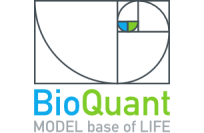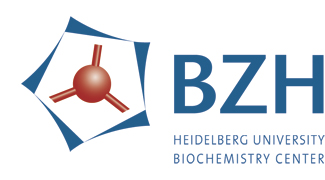PINTS - HELP
Submitting a Query
This server allows you to compare a protein structure against a database of patterns or a structural pattern against a database of protein structures. In addition, you can compare two proteins. We currently restrict the size of a pattern to 100 and a protein structure to 800 amino acids.
Name
You can give an arbitrary name (uppercase letters) to your queries to easily identify them. If the Name is not specified, PINTS will assign an aribitrary one.
Databases
We currently provide various databases of whole structures:- ECOD level 1 representatives (2214 structures) : one member of each first (top) level of structure class (as defined by ECOD 27 Feb 2018)
- ECOD level 2 representatives (3673 structures): one member of each second level of structure class
- ECOD level 3 representatives (3948 structures): one member of each third level of structure class
- ECOD level 4 representatives (10476 structures): one member of each fourth level of structure class
- PDB 30% identity representatives (27,469 chain structures): one member of each 30% identity cluster
- PDB 90% identity representatives (50,902 chain structures): one member of each 90% identity cluster
- SCOP Folds (1393 structures) : one member of each protein fold (as defined by SCOP v. 1.75)
- SCOP SFams (2222 structures): one member of each protein superfamily (as defined by SCOP v. 1.75)
- SCOP Fams (4193 structures): one member of each protein family (as defined by SCOP v. 1.75)
- SCOP P.Species (10213 structures): one structure for each protein (as defined by SCOP v. 1.75)
- SITE Annotations (452,120 patterns): residues from all annotated SITEs in the PDB (as of Mar 2018)
- Ligand-binding Sites (3A) (375,640 patterns): residues within 3.0Å of a HETATM in the PDB (as of Mar 2018)
Upload
Input format is the normal PDB text format; i.e. you can directly upload your PDB files. Only the ATOM records are required and all other lines are ignored. We consider only the 20 standard amino acids and disregard lines that are not compatible with PDB format. For publicly available structures, you can instead specify PDB identifiers (e.g. 1mct) and chain (e.g. A, use '_' for ' ' and asterix '*' as wildcard).
Restrict
You can further restrict your query to specific residues within the submitted or specified PDB file by an easy syntax: Chain ID (e.g. A, use '_' for ' ' and asterix '*' as wildcard) followed by colon ':' and a comma separated list of residue numbers or ranges of residue numbers. If a residue has an insertion code different from ' ', you must append it in parentheses to the residue number. Separate residues from different chains by ; (semicolon) or a new line.
Some examples:- A:12,39,50,90
- _:10,30-39,50
- *:1-11,12(A),13-20
- A:12,15,30;B:25;C:20
Note that you need to provide at least 3 residues per pattern / structure and at most 100 per pattern or 800 per structure.
Submit only structure data (coordinates) in PDB-format - NOT sequences.
E-value
You can specify an E-value cutoff similar to that in BLAST for your search. E-values provide a statistical estimate of how many matches of similar quality can occur by chance (i.e. without functional implications). The default setting is 10 and should only be changed if matches with low quality (i.e. distorted sites with high RMSDs) are wanted. Especially for the highly redundant SITE Annotations or Ligand-binding Sites (Red.) databases, high E-value cutoffs might produce an enormous amount of matches. For practical reasons, PINTS processes and provides only the best 1000 matches per search. Please note that for high E-value cutoffs PINTS might not be able to report all matches: especially for large patterns, high E-values translate to high RMSDs that allow for great errors in residue displacement. For example, an RMSD of 5Å over 8 residues can - in the worst case - mean that 7 residues match the query perfectly and the 8th is displaced by 14Å. Such distance tolerances are not feasable during the depth-first search and generally make no sense in a protein structure context.
If you want to get an email notification when your search is finished, please specify your email address and check it's correct.
After submitting the form, you'll be sent to a results page that automatically refreshes until the results are ready. You should keep this page open in your browser, bookmark it, or give an email address to which an email will be sent when your results are ready.
Viewing Results
After your search has finished, your results will automatically appear in the results page - you should keep this page open, bookmark it, or, if you gave an email address, you'll get an email with a link to it.
PINTS displays the matches of a query in a table ordered by their statistical E-value, along with information about the residues involved. See this example search with a catalytic triad (taken from trypsin, 1mct) against the ligand binding sites (3Å) database.
The first line of each result gives the identifier of the found pattern/protein, the next two lines give the E-value and Root Mean Square Deviation (RMSD) of the match between the query and the protein/pattern, and subsequent lines list the residue equivalencies.



